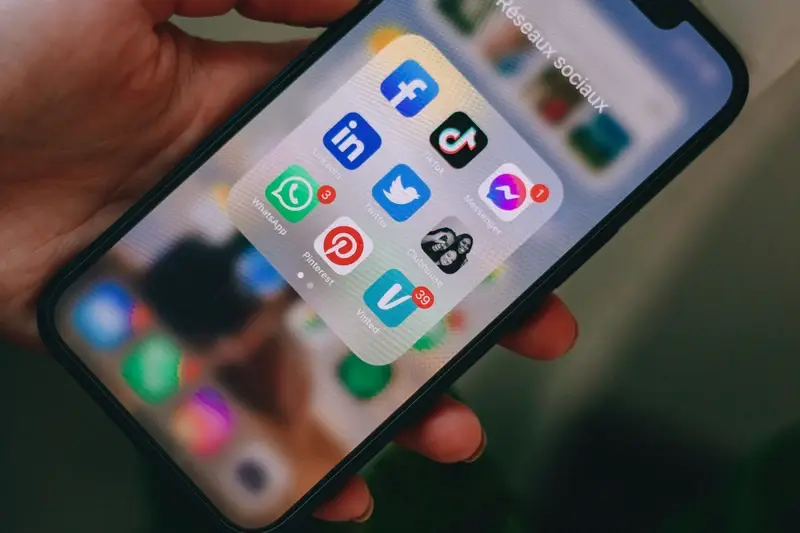Should I Start A Youtube Channel To Promote My App?
Every minute, more than 500 hours of video are uploaded to YouTube—that's roughly 30,000 hours of content every single hour. For mobile app developers, this creates both a massive opportunity and a daunting challenge. With millions of apps competing for attention in crowded app stores, video marketing has become one of the most powerful ways to cut through the noise and connect with potential users.
Over the years, I've watched countless app developers struggle with this exact question: should they invest time and resources into creating YouTube content? The short answer is yes, but not for the reasons you might think. YouTube isn't just about going viral or getting millions of views—it's about building trust, demonstrating value, and giving people a reason to choose your app over the thousands of alternatives.
The most successful app marketing campaigns don't just show features; they solve problems people didn't even know they had
A well-planned content strategy can transform how people discover and perceive your mobile app. But here's the thing—most developers approach YouTube marketing completely wrong. They focus on polished promotional videos instead of genuinely helpful content. This guide will show you how to build a sustainable video marketing approach that actually works, without burning through your budget or wasting months creating content nobody watches.
What Is YouTube Marketing For Mobile Apps
YouTube marketing for mobile apps is exactly what it sounds like—using YouTube videos to promote your app and get more people to download it. But here's the thing: it's not just about creating a single trailer and hoping for the best. It's about building a proper presence on the platform that actually connects with your target audience.
Think of it this way: people spend hours on YouTube every day, and they're already comfortable watching videos about products they might want to buy or use. Your app can tap into this behaviour by showing up where your potential users are already hanging out. The beauty of YouTube marketing is that you can demonstrate your app in action—something that's much harder to do with traditional advertising.
The Main Benefits
- You can show your app working in real-time, not just static screenshots
- YouTube videos appear in Google search results, giving you extra visibility
- People can share your videos easily, potentially going viral
- You build trust by putting a face to your brand
- It's relatively cheap compared to paid advertising
The key difference between YouTube marketing and other forms of app promotion is that you're not interrupting people—you're providing them with content they actually want to watch. When done right, your videos become a resource that people actively seek out rather than skip past.
Building Your App's Video Content Strategy
Right, let's talk about building a proper video content strategy for your mobile app—because throwing random videos at YouTube and hoping something sticks isn't going to cut it. I've worked with countless app developers over the years, and the ones who succeed with video marketing are those who plan their content properly from the start.
Your content strategy needs to answer three basic questions: what are you making, who are you making it for, and why should they care? Sounds simple, but you'd be surprised how many people skip this step and jump straight into filming.
Know Your Audience Inside Out
Before you even think about picking up a camera, you need to understand who's going to watch your videos. Are they teenagers looking for the latest gaming app? Busy parents wanting productivity tools? Each group watches different types of content and responds to different messaging.
Start by creating viewer personas—detailed profiles of your ideal watchers including their age, interests, pain points, and what type of content they typically consume on YouTube.
Content Pillars That Actually Work
Your video content should sit on three main pillars: educational content that teaches people something useful, entertaining content that makes people smile, and promotional content that showcases your app. The magic ratio? About 60% educational, 30% entertaining, and 10% promotional.
- Educational videos that solve real problems your audience faces
- Behind-the-scenes content showing your development process
- User-generated content featuring real customers
- Quick tips and tutorials related to your app's purpose
- App updates and feature announcements
The key is consistency—not just in posting schedule, but in quality and messaging. People subscribe to channels they can rely on, so make sure every video delivers value in some way.
Types Of Videos That Work Best For App Promotion
After years of working with app developers and watching what actually gets results, I've noticed that certain types of videos consistently outperform others. It's not about having the fanciest equipment or the biggest budget—it's about choosing the right format for your message.
App Demo Videos
These are your bread and butter. People want to see your app in action before they download it, and screen recordings with voiceover work brilliantly for this. Show the key features, walk through the user journey, and keep it under two minutes. I always tell my clients to focus on the problems their app solves rather than listing every single feature.
Behind-the-Scenes Content
People love seeing how things are made, and apps are no different. Videos showing your development process, team members, or the story behind why you built the app can build real connections with your audience. These don't need to be polished—sometimes the rough edges make them more authentic.
Tutorial videos work well too, especially if your app has complex features that need explaining. User testimonials can be powerful, though they're harder to get when you're just starting out. The key is to pick one or two video types and do them well rather than spreading yourself too thin across every possible format.
Creating Videos Without Breaking The Bank
Budget worries kill more video marketing dreams than bad cameras ever will. I've worked with countless app developers who think they need Hollywood-level production values to compete on YouTube—they don't. Some of the most successful mobile app videos I've seen were shot on smartphones with nothing more than good lighting and clear audio.
Your phone's camera is probably better than you think. Modern smartphones can shoot high-quality footage that's perfectly suitable for app promotion videos. The real secret isn't expensive equipment; it's understanding what your audience actually wants to see. They want to know how your app works, what problems it solves, and why they should download it.
Free Tools That Actually Work
Screen recording software like OBS Studio costs nothing and captures your mobile app beautifully. Pair it with free editing tools like DaVinci Resolve or even your phone's built-in editor, and you've got everything needed for professional-looking content. Add some royalty-free music from YouTube's Audio Library, and you're sorted.
The best video marketing happens when you focus on solving problems rather than showing off production values
What matters most is consistent content creation. One well-made video per week beats twelve expensive videos per year. Your audience wants regular updates about your app's features, not cinema-quality masterpieces. Start simple, learn as you go, and invest in better equipment only when your content strategy proves successful.
Getting People To Actually Watch Your App Videos
Making great videos is one thing—getting people to actually watch them is another beast entirely. I've worked with app developers who've spent weeks perfecting their promotional videos, only to see them get a handful of views. It's heartbreaking really, but there are proven ways to boost your video viewership.
Your thumbnail is your first impression and honestly, it's probably the most important element. People scroll through YouTube quickly; they're not reading titles carefully or checking descriptions. They see a thumbnail and decide in seconds whether to click. Make yours bold, clear, and show your app's interface. Text overlays work well too—something like "New App Review" or "This App Changed Everything" catches attention.
Timing Your Content Release
When you publish matters more than you might think. Most successful app channels post during peak hours when their audience is online. For mobile apps, this often means evenings and weekends when people are browsing for new downloads.
Hook Viewers in the First 15 Seconds
YouTube's algorithm pays close attention to how long people watch your videos. If viewers click away within the first few seconds, your video won't get recommended to others. Start with your most compelling point—don't waste time with lengthy introductions.
- Ask a question that your video will answer
- Show the app's coolest feature immediately
- Promise a specific benefit or solution
- Create urgency around limited-time offers
Remember, people are impatient. They want to know what's in it for them right away. Give them a reason to stick around and they will.
Measuring Success And Understanding Your Results
Right, so you've been posting videos for a few weeks now and you're wondering if any of this YouTube stuff is actually working. I get it—staring at numbers all day isn't exactly thrilling, but understanding what's happening with your mobile app promotion is absolutely key to improving your video marketing efforts.
YouTube gives you loads of data through YouTube Analytics, but don't get overwhelmed by every single metric. Focus on the ones that actually matter for your content strategy. Watch time is huge—it tells you if people are genuinely interested in your app videos or clicking away after five seconds. Views are nice for your ego, but they don't mean much if nobody's sticking around to learn about your app.
Key Metrics Worth Tracking
- Watch time and audience retention
- Click-through rates on your app store links
- Comments and engagement levels
- Subscriber growth from app-related content
- Traffic to your app store page
Set up Google Analytics or your app store's analytics to track where your downloads are coming from—this will show you exactly how much your YouTube efforts are contributing to actual app installs.
What The Numbers Actually Mean
Here's the thing about YouTube metrics—they're not just vanity numbers. If your retention drops off at the 30-second mark consistently, that's telling you something important about your video openings. Maybe you're taking too long to get to the point, or perhaps your intro isn't grabbing attention properly. Low click-through rates on your app links might mean your call-to-action needs work, not that your content strategy is failing.
Common Mistakes That Kill App YouTube Channels
I've watched countless app developers pour their hearts into YouTube channels only to see them crash and burn within months. The truth is, most of these failures could have been avoided with a bit of planning and understanding of what actually works.
One of the biggest killers is inconsistency. You can't upload three videos in a week then disappear for two months—YouTube's algorithm will forget you exist and so will your audience. I've seen brilliant apps with terrible upload schedules that never gained traction because they couldn't maintain momentum.
The Most Common Channel Killers
- Uploading sporadically without a proper schedule
- Making videos that are too long and boring (keep them under 3 minutes for app demos)
- Focusing only on features instead of showing real benefits
- Ignoring comments and not engaging with viewers
- Using terrible audio quality (people will forgive bad video but not bad sound)
- Not optimising titles and descriptions for search
- Expecting instant results and giving up too quickly
The channels that succeed are the ones that treat YouTube like a marathon, not a sprint. They show up consistently, respond to their community, and keep improving their content based on what their audience actually wants to see. It's not rocket science, but it does require patience and persistence.
Conclusion
After working with countless app developers over the years, I can tell you that YouTube isn't a magic bullet for app promotion—but it's definitely one of the most powerful tools in your marketing toolkit. The question isn't really whether you should start a YouTube channel; it's whether you're ready to commit to doing it properly.
Your mobile app deserves quality video marketing, not half-hearted attempts that fizzle out after three uploads. We've covered everything from building a solid content strategy to measuring your results, and the truth is that success comes down to consistency and understanding your audience. You don't need Hollywood budgets or professional equipment to create videos that connect with potential users.
The apps that win on YouTube are the ones that solve real problems and show—not just tell—how they do it. Whether you're demonstrating features, sharing user stories, or providing tutorials, your videos should always answer the question: "What's in it for me?" If you can do that consistently whilst building a genuine community around your app, YouTube can become your most valuable marketing channel. Just remember that building an audience takes time, so start now and stay patient.
Share this
Subscribe To Our Learning Centre
You May Also Like
These Related Guides

Can I Update My App After Its In The App Store?

How Do I Test Different App Store Screenshots for Better Results?



